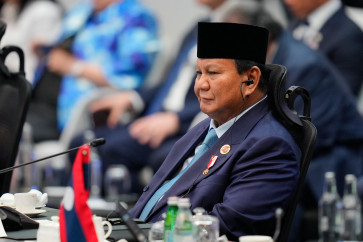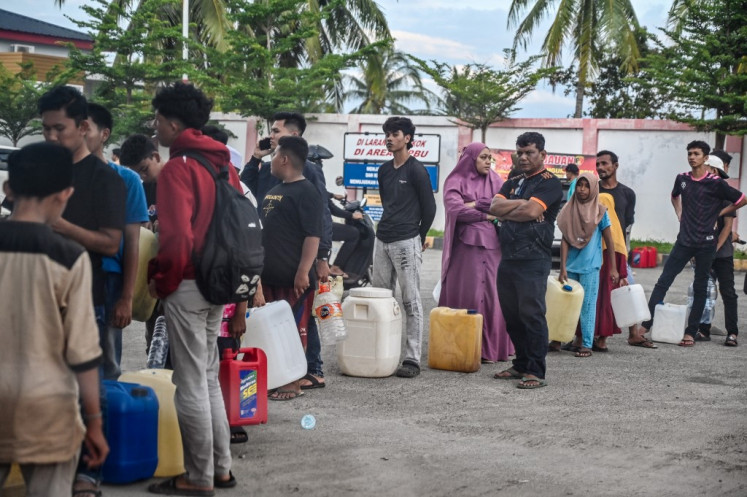Popular Reads
Top Results
Can't find what you're looking for?
View all search resultsPopular Reads
Top Results
Can't find what you're looking for?
View all search resultsOil output rebounds post haze but production remains below target
Although the countryâs oil production has picked up following the end of haze-triggered disruption in several working areas, total output remains far below the target in the state budget
Change text size
Gift Premium Articles
to Anyone
A
lthough the country's oil production has picked up following the end of haze-triggered disruption in several working areas, total output remains far below the target in the state budget.
Operations deputy at the Upstream Oil and Gas Regulatory Special Task Force (SKKMigas) deputy, Muliawan, said on Tuesday that oil production had reached 800,000 barrels per day (bpd).
'There were disruptions ' well-drilling stopped, electricity outages occurred and rig operations halted. However, the effects of the haze have ended and we hope to accelerate production to return to the [output] schedule,' Muliawan said.
Earlier this month, SKKMigas blamed thick haze from forest fires in Riau, Sumatra, for the shutdown of hundreds of oil wells. It was estimated that as many as 12,000 bpd of oil were lost due to the disruption.
Among the sites affected were the Rokan working area, which is operated by PT Chevron Pacific Indonesia. For its emergency maintenance due to the haze, Chevron shut down 573 wells and halted the operation of 15 water injection pumps. Rokan's losses during the cessation was estimated at 8,800 bpd of oil, but production at the site has now resumed.
Operations were also disrupted at the Coastal Plains Pekanbaru (CPP) working area, which is operated by PT BOB-Bumi Siak Pusako, and the Malacca Strait working area, which is operated by EMP Malacca Strait.
The CPP is estimated to have lost 4,000 bpd of oil and the Malacca Strait a cumulative 7,000 barrel. Both have now resumed production.
The haze was the second natural disturbance to affect oil working areas this year, following inclement weather in early January.
Despite the recovery from the latest disruption, national oil output remains below the average daily production level of 870,000 bpd.
Indonesia, which was once a member of the Organization of the Petroleum Exporting Countries (OPEC), has seen its oil production drop due to a natural decline in production in old fields. At the same time, energy consumption keeps growing in line with economic growth.
Due to growing demand, the country has to import oil and oil-based products.
The government has been trying to encourage oil companies to accelerate exploration to boost the country resources and reserves. However, various problems, not least of which is a lengthy permit process, have hampered companies.
This year, oil companies are planning to spend US$25.64 billion in capital expenditure to support exploration and development; higher than the $22.1 billion in expenditure spent in 2013.
According to the work plan, drilling this year will cover 206 exploration and 1,300 development wells. There will also be 989 work-over drillings, according to figures from SKKMigas.
'All the programs that have been approved must be carried out. It is also important to monitor procurement,' said SKKMigas' acting chief, Johannes Widjonarko.










